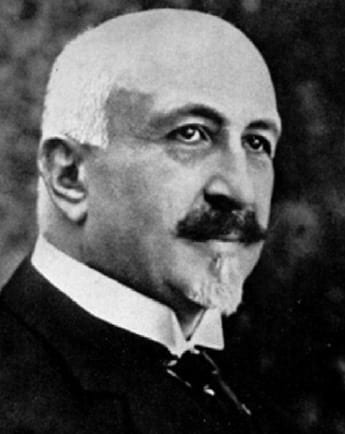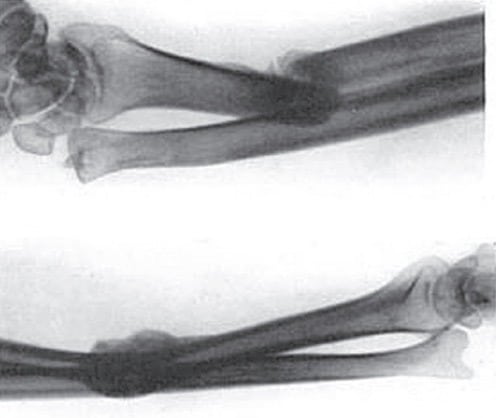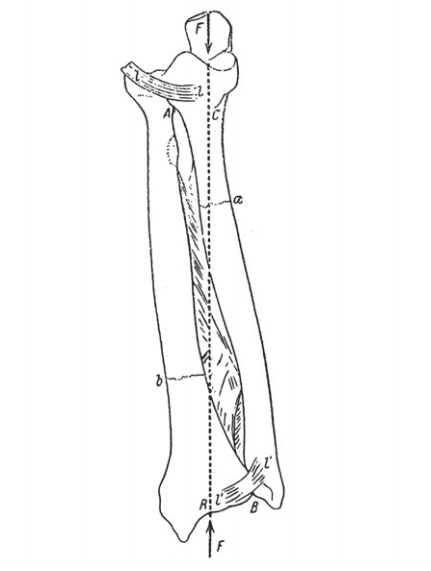Riccardo Galeazzi

Riccardo Galeazzi (1866-1952) was an Italian orthopaedic surgeon.
The majority of Galeazzi’s work focused on scoliosis, skeletal tuberculosis, acute arthritis in the infants and juvenile ostechondrosis. First surgical treatment of recurrent dislocation of patella.
Distinguished surgeon and academic with nearly 150 publications. World pioneer for occupational treatment and rehabilitation centers. In 1911 he opened an occupational treatment and rehabilitation clinic in Milan, thought to be first of its kind.
Galeazzi directed the Archivio di Ortopedia – Italian periodical devoted to orthopaedic surgery.
The Galeazzi fracture (1934) is named after him. Following review of >12,000 congenital hip dislocations, developed the Galeazzi Test to improve early detection.
Biography
- Born in Turin, Italy on August 17, 1866
- 1886 – Commenced studies at Turin Medical School
- 1890 – Graduated medical school with honors
- 1899 – Qualified as lecturer in Clinical Medicine and Surgical Operations
- 1903 – Appointed Director of the Pius Institute for Crippled Children (Instituto dei Rachitici)
- 1906 – Commenced teaching at the Orthopaedic Institute at the University of Milan
- 1908 – Became Professor of Clinical Orthopaedics and Traumatology
- 1911 – Directed Archivio di Ortopedia for 35 years, the oldest journal devoted to orthopedics
- 1929 – Founding member of the International Society for Orthopedic Surgery and Traumatology (SICOT)
- 1934 – Published article describing fractures of the radial shaft with dislocation of the DRUJ
- 1948 – Published ‘The pathogenesis and treatment of scoliosis’
- Died February 25, 1952 in Milan
- 1961 – Orthopaedic institute pf Milan renamed Instituto Ortopedico Galeazzi
Figura imponente e serena, precisa obiettività diagnostica, sicurezza ed eleganza della tecnica operatoria, eloquenza robusta e forbita, cortese e riguardoso delle altrui opinioni
Piero Palagi speaking of Galeazzi, 1950
Imposing and serene figure, precise diagnostic objectivity, safety and elegance of the surgical technique, robust and refined eloquence, courteous and considerate of others’ opinions
Piero Palagi speaking of Galeazzi, 1950
Medical Eponyms
Galeazzi Fracture (1934)
Fracture of the distal third of the radius with associated distal radio-ulna joint (DRUJ) disruption.
In 1934, Galeazzi described radial shaft fracture with associated DRUJ dislocation and published his experience of 18 cases. He reduced the radial shaft fracture by pulling on the thumb with the forearm in the supinated position, and the ulnar head by radially deviating the wrist, and maintained the reduction using a plaster of Paris cast.

Das Phänomen kann mit einem Bogen verglichen werden, dessen Sehne im Augenblick des Abschnellens des Pfeiles sich notwendigerweise verkürzt und so eine Uberspannung der Bogenkurve hervorruft, wobei die Enden der Kurve den stärksten Druck aushalten müssen.
So wirkt demnach beim häufigsten Fall des von mir beschriebenen Syndroms, nämlich beim Fall auf die Hand, das Körpergewicht longitudinal auf die Ulna, und zwar verursacht durch die plötzliche und heftige Superposition der Radiusfragmente, die auf die Fraktur folgt.
Die Ulna, im Verhältnis zum Radius zu lang geworden, biegt sich zwangsläufig. Wenn der Knochen die Wirkung der Longitudinalkraft, die seine Biegung verursacht, nicht aushält, so bricht er. Leistet er aber erfolgreich Wiederstand, so ist er doch immerhin gezwungen, sich in entsprechender Weise an seinem unteren Ende zu verrenken.
The phenomenon can be compared to that of a bow, whose string is necessarily shortened in the moment of shooting the arrow, thus causing an overload on the bow, where it’s ends must bear the strongest force.
As such, in most cases of the syndrome described by myself, namely the fall onto the hand, the bodyweight impacts longitudinally on the ulna, caused by the sudden and impactful superposition of the broken radial fragments.
The ulna stretches too long, relative to the radius, and bends necessarily. If the bone cannot sustain the effects of the longitudinal force, which is causing it to bend, it breaks. If however, it can resist, it is forced to dislocate itself at its lower end.

Galeazzi Test (segno di Galeazzi)
[aka Allis sign or Skyline test] is used to assess for hip dislocation, specifically testing for developmental dysplasia of the hip.
Controversies
Fracture pattern actually first described by Sir Astley Cooper in 1822 and published in 1824 some 110 years prior to Galeazzi’s publication. Cooper describes cases of radius fracture with DRUJ disruption and ulna dislocation
Major Publications
- Galeazzi R. Le case di lavoro per gli storpî, paralitici e mutilati: rapporto presentato al IV Congresso internazionale d’assistenza pubblica e privata, Milano, 23-27 maggio 1906
- Galeazzi R. Sulla coxa valga. 1906
- Galeazzi R. Contributo alla cura incruenta della lussazione congenita dell’anca, Atti della Società Lombarda di Scienze Mediche e Biologiche, 1912; I: 31-41
- Galeazzi R. La cura della lussazione congenita dell’anca: relazione all’VIII Congresso della Società italiana di ortopedia Firenze, Dicembre 1913
- Galeazzi R. La cura della lussazione congenita dell’anca, Archivio di ortopedia, 1914; 31(1): 55-175
- Galeazzi R. Sugli esiti lontani della cura incruenta della lussazione congenita dell’anca, Archivio di Ortopedia, 1915; 32(2): 191-196
- Galeazzi R. Le moderne provvidenze sociali per i mutilati di guerra. 1915
- Galeazzi R. Nuove applicazioni del trapianto muscular e tendineo. Arch Di Orthop Milano. 1922;38:315–323.
- Galeazzi R. Sulla coxa plana, Archivio di Ortopedia 1923; 39: 85-90
- Galeazzi R. Clinical and experimental study of lesions of the semilunar cartilages of the knee joint. J Bone Joint Surg 1927;9:515–523
- Galeazzi R. The treatment of scoliosis. J Bone Joint Surg. 1929;11:81–86.
- Galeazzi R. Considerazioni sugli esiti lontani della cura incruenta della lussazione dell’anca, Archivio di ortopedia, 1933; 49(1): 75-84
- Galeazzi R. Di una particolare sindrome traumatica dello scheletro dell’ avambraccio. Atti e memorie della Società lombarda di chirurgia. (Of a particular traumatic syndrome of the forearm’s skeleton). 1934;2:663–666
- Galeazzi R. Uber ein besonderes Syndrom bei Verletzungen im Bereich der Unterarmknochen. Archiv fur orthopadische und Unfall Chirurgie 1934; 35:557–562. [Galeazzi fracture]
References
Biography
- Pubblicazione celebrativa dei 30 anni di direzionedell’Istituto rachitici e di insegnamento universitario del prof. R. G., Archivio di ortopedia, 1935; 51(1): 3-54
- Scaglietti O. Riccardo Galeazzi, 1866-1952. Journal of Bone and Joint Surgery (British). 1953;35-B:679-680
- Poli A. Commemorazione di Riccardo Galeazzi [Commemoration of Riccardo Galeazzi]. Arch Ortop. 1952 Jan-Mar;65(1):I-V.
- In onore di R. Galeazzi nel centenario della nascita [In honor of R. Galeazzi on the century of his birth]. Minerva Ortop. 1967 Dec;18(12):885-7
- Aliverti M. GALEAZZI, Riccardo. Dizionario Biografico degli Italiani, 1988; 51
- Bibliography. Galeazzi, Riccardo. WorldCat Identities
Eponymous terms
- De Vecchi P. Modern Italian Surgery and Old Universities of Italy. Scientific Institutes of Learning in Milan. 1921:154–162.
- Ponzoni A. The results of Galeazzi’s operation in patellar dislocation. Minerva Ortop. 1954 May;5(5):192-3
- Reckling FW, Peltier LF. Riccardo Galeazzi and Galeazzi’s fracture. Surgery. 1965 Aug;58:453-9.
- Dragonetti L, Bona L. La ricostruzione del legamento crociato anteriore secondo Galeazzi [Reconstruction of the anterior cruciate ligament with the Galeazzi method]. Minerva Ortop. 1967 Dec;18(12):900-5
- Sebastin SJ, Chung KC. A historical report on Riccardo Galeazzi and the management of Galeazzi fractures. J Hand Surg Am. 2010 Nov;35(11):1870–1877.
- Polenghi S. Raddrizzare gli arti, rieducare i mutilati. L’ortopedia di Riccardo Galeazzi al Pio Istituto dei Rachitici. In: Polenghi D, ed. La Rete Del Perfezionamento Medico. Milan: Milano Scientifica, 2008: 217–235
- Spina N. La frattura-lussazione di Galeazzi: invertendo i fattori… l’eponimo cambia! Giornale Italiano di Ortopedia e Traumatologia, 2019;45:109-119
- Polenghi S. Back to Work: Riccardo Galeazzi’s Work for the Mutilated Veterans of the Great War, Between German Model and Italian Approach. In: Revival After the Great War: Rebuild, Remember, Repair, Reform, edited by Luc Verpoest et al., 2020: 219–238
Eponym
the person behind the name
Junior doctor at Royal Perth Hospital. Piqued by physiology, padawan in procedures and partial to fiction. Always careful to check my blind spot when merging into the fast lane.

